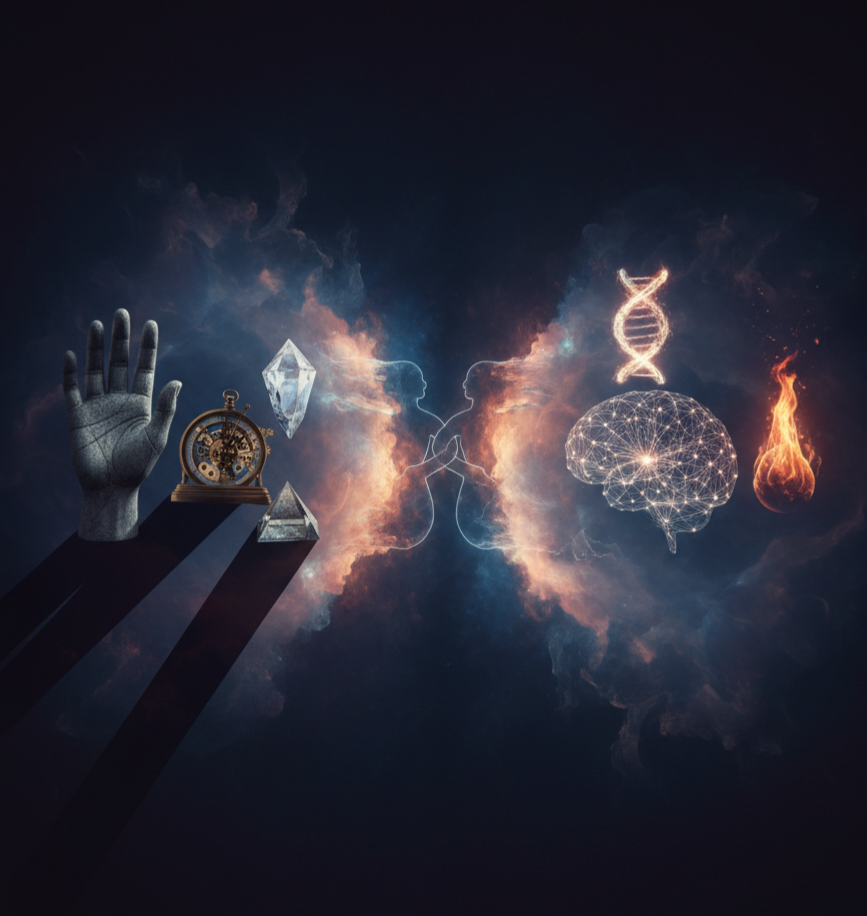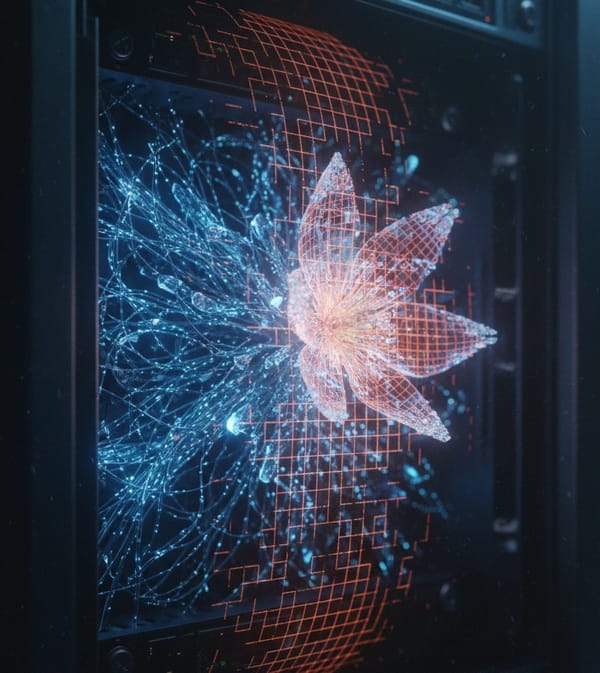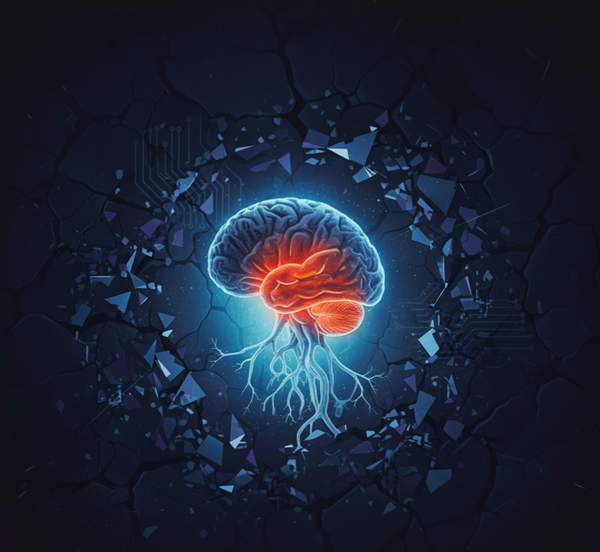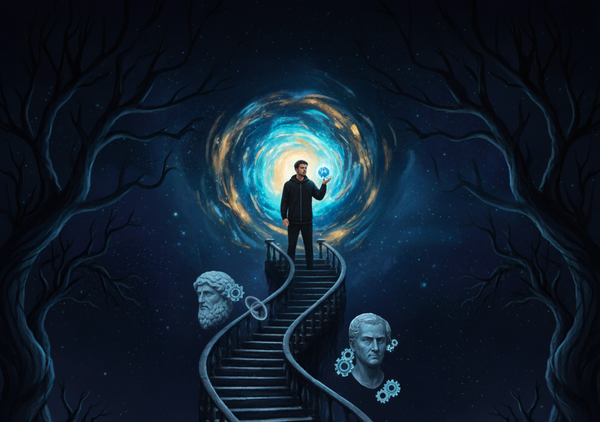How Solving the Concept Problem Unlocks Philosophy's Greatest Mysteries

Philosophy has wrestled with seemingly intractable problems for millennia: How does mind relate to body? What makes knowledge objective rather than merely subjective? How do we bridge the gap between inner experience and outer reality? These questions have spawned countless theories, debates, and entire philosophical traditions, yet they remain as puzzling today as they were to ancient thinkers.
What if these aren't separate problems at all, but different faces of a single, deeper mystery? What if solving the riddle of concepts - comprehending their essence - could unlock all these philosophical puzzles at once?
This isn't wishful thinking. A careful examination of how we actually use concepts reveals that many of philosophy's hardest problems stem from misunderstanding the nature of concepts themselves. Solve the concept problem, and the others begin to dissolve.
The Philosophical Knots We're Trying to Untie
Consider the persistent mysteries that have defined philosophy:
The Mind-Body Problem: How does immaterial mind interact with material body? How can subjective thoughts influence objective physical processes? This puzzle has generated dualist, materialist, and idealist theories, each capturing something important while leaving crucial questions unanswered.
Subjectivity vs. Objectivity: Why do some aspects of experience seem private and subjective while others appear public and objective? How do we move from individual perspective to shared knowledge? What makes scientific claims more than mere personal opinion?
The Knowledge Problem: How do finite minds gain knowledge of reality? What is reality? What bridges the gap between inner representations and reality? Is there a gap to be filled?
These problems seem distinct, but they share a common thread: they all assume we understand what concepts are. Yet this assumption may be exactly what's causing the trouble.
The Concept-Sign Foundation
To understand why, let's start with something we all do constantly but rarely examine: the relationship between concepts and signs.
Every moment of conscious experience involves the relation between inner meaning and outer expression:
- Recognition: Recognizing signs and relating signs (words, gestures, images) to concepts
- Expression: Relating concepts to signs and expressing signs so that others can operate their own recognition
This bi-directional flow seems effortless, yet it represents one of the most sophisticated processes in the known universe. Right now, as you read these words, you're recognizing signs and relating them to concepts, somehow maintaining coherence across the mysterious boundary between minds.
But here's what's crucial: not all concepts relate to signs in the same way.
Three Kinds of Concepts, Three Kinds of Problems
A closer examination reveals three fundamentally different categories of concepts, each with its own relationship to expression and recognition:
Directly Sharable Concepts: These can be expressed and recognized directly. When I point "up," you understand because we share orientation. When I show you three objects, the quantity is directly felt. These concepts map onto universal features of embodied existence, creating foundations for immediate mutual understanding, because they are contextualized in space/time/quantity.
Directly Recognizable but Indirectly Expressible Concepts (Qualities like Color): We can directly recognize "red" and relate it to behavior around red objects, but we cannot directly express red (only indirectly using the sign/word red). Remarkably, cephalopods have evolved beyond this limitation - their chromatophores let them directly express color concept for others (cephalopods and us) to recognize.
Indirectly Recognizable and Expressible Concepts (Abstract Ideas): Freedom, justice, love - these can be expressed and recognized only indirectly through signs. They have no direct shared expression (same as color for humans) and must be recognized indirectly through signs.
This three-fold distinction already hints at solutions to our philosophical puzzles. But the real breakthrough comes with a deeper insight.
Objects: The Key Insight That Changes Everything
Here's the new realization: what we call "objects" aren't fundamentally different from abstract concepts. They're simply concepts that happen to be contextualized within the concepts of space, time, and quantity.
A "chair" is a conceptual construct, just like "freedom." The difference is that "chair" is contextualized in space, time and quantity:
- Spatial boundaries (occupies this region, not that one)
- Temporal persistence (exists across time)
- Quantitative properties (one chair, not two)
Meanwhile, "freedom" lacks these spatiotemporal anchors but is no less real as a concept.
Space, time, and quantity function as a conceptual scaffold that makes certain concepts feel "objective." When concepts get contextualized onto this scaffold, they become:
- Localizable ("the chair is here")
- Persistent ("the same chair over time")
- Countable ("three chairs")
- Directly shareable (we can point to them)
Signs themselves are objects
Signs are objects. This is why we directly share them and recognize them objectively.
Solving Subjectivity vs. Objectivity
This insight immediately dissolves the subjectivity-objectivity problem. Our sense of an "objective world" derives from conceptual consensus around spatiotemporally contextualized concepts. "Objects" feel objective because they're concepts aligned with the universal spatiotemporal frameworks that all embodied beings necessarily share, vertebrates more than others.
Abstract concepts feel subjective precisely because they can't be contextualized onto these universal coordinates. They exist in purely relational/symbolic relation, making them feel more "mental" or "personal."
We feel or experience both concepts and objects. The distinction isn't between subjective concepts and objective things, but between concepts that are spatiotemporally contextualizable and those that aren't.
The Mind-World Problem Dissolves
This realization also eliminates the mind-body problem. If objects are just spatiotemporally contextualized concepts, then the traditional gap between mental representations and external reality evaporates. There's no mysterious interaction between immaterial mind and material world because both emerge from the same fundamental concept creating process.
The "external world" isn't external to our capacity to create and feel or experience concepts or objects - it's the subset of concepts that manifest through spatiotemporal frameworks. "Physical" and "mental" become different aspects of the same conceptual scope rather than separate ontological categories requiring connection.
Mind doesn't interact with world; rather, what we call mind and what we call world are different expressions of the same underlying capacity.
The Circularity Trap
This reconceptualization seems promising, but it leads directly into philosophy's deepest puzzle. If everything reduces to concepts, what exactly are concepts themselves?
Here we hit the fundamental circularity that has trapped every attempt to understand meaning:
What is a concept? A mental representation. What is a mental representation? A cognitive structure that stands for something. What is a cognitive structure? A neural pattern that embodies concepts...
Every definition loops back to concepts. Even our most sophisticated scientific theories - speaking of information, computation, neural networks, energy - are built from conceptual constructs. We use concepts to explain concepts, creating an inescapable self-referential loop.
This isn't just an academic problem. It reveals something fundamental about the limits of traditional understanding. Every approach that tries to explain concepts through other concepts - whether materialist, idealist, empiricist, or functionalist - ultimately explains concepts in terms of concepts, never breaking the circle.
Geneosophy: The Non-Conceptual Solution
This is where Geneosophy enters with a radically different approach. Instead of trying to understand concepts through other concepts, it focuses on the generative processes from which concepts emerge.
The name reveals the core idea: gennao (to generate) plus sophia (knowledge). Rather than asking "What are concepts?" - which assumes we already understand what "what" and "are" mean - Geneosophy asks "How do concepts arise?"
This shift from assuming concepts and using them in our reasoning episodes to focusing on the generation of concepts, opens an entirely new approach to comprehending.
At Geneosophy's foundation are two fundamental non-concepts: XI (eXtended I) and Potentiality. These aren't traditional concepts because that would return us to circularity. Instead:
- XI is understood as an autonomous, creative multiplicity
- Potentiality functions as an interaction environment, similar to quantum mechanical contexts
The key insight is that our experience of concepts, objects, mind, body, subjectivity, and objectivity all arise from the dynamic interaction between XI and potentiality. We don't start with pre-existing concepts that must somehow be related, but with generative processes that give rise to all experiential distinctions. This does not mean we start from a clean slate, but from a shared form that allows us to create concepts.
The Master Key Unlocks Multiple Locks
The Geneosophic approach to concepts solves our original philosophical problems simultaneously:
The Mind-Body Problem: Since both mental and physical phenomena emerge from the same XI-potentiality interactions, there's no gap requiring connection. Mind and body are different expressions of the same underlying generative creativity.
Subjectivity vs. Objectivity: Our three-fold distinction finds natural explanation. Spatiotemporal concepts feel objective because they manifest universal structural features of embodied existence. Abstract concepts feel subjective because they emerge through culturally specific symbolic processes. Both are equally real expressions of generative processes.
The Knowledge Problem: Knowledge isn't a matter of inner representations corresponding to outer reality, but of participating in the same creative processes that generate both experiencer and experienced. Knowing becomes a mode of creative participation rather than passive representation.
The Unity of Science and Experience: Since all concepts - whether experienced as "mental" or "physical," "subjective" or "objective" - emerge from the same generative source, there's no fundamental divide between scientific and experiential knowledge. Different disciplines become different approaches to the same underlying creative processes.
Beyond the Mysteries
We stand at a unique moment where our most successful physical theories suggest that observer and observed are more intimately connected than classical science assumed.
The recognition that solving the concept problem can unlock multiple philosophical mysteries isn't just theoretical speculation. If concepts are the foundation of experience, and if understanding their generative nature can dissolve traditional philosophical puzzles, then this approach becomes crucial for addressing practical questions about intelligence, consciousness, creativity, and human flourishing.
It suggests new approaches to artificial intelligence (not simulating concepts but understanding their generation), education (fostering generative rather than merely representational understanding), and creative endeavor (participating consciously in the processes through which new concepts emerge).
The mysteries that have defined philosophy for centuries may not need separate solutions. They may all yield to a single key: understanding concepts not as things to be explained through other concepts, but as expressions of the creative processes through which reality and mind co-arise.




